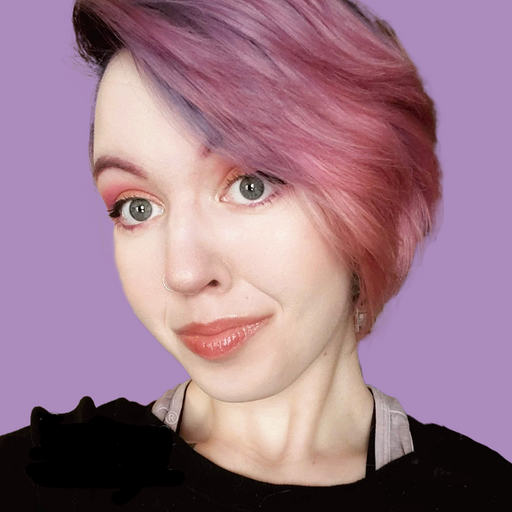Tramadol Addiction Treatment & Rehab

By The Orlando Recovery Center
Editor Heather Lomax | Medically Reviewed By Danielle Boland
Last Updated: September 13, 2024
If you are in an immediate emergency, call 911. If you are looking for more information on substance abuse treatment and it is not a medical emergency, call our 24/7 Tramadol Helpline at 855-416-2466.
Tramadol is an opioid painkiller. It is about one-tenth as potent as morphine and is often prescribed for moderate pain. It is recommended to only use tramadol for short periods. People who take it daily for several weeks or months are more likely to become dependent on the drug.
Like other opioids, tramadol can be habit-forming. It can make a person feel euphoric and relaxed, so some people who start taking the drug for pain may continue to take it because of these other effects.
Over long-term use, the body can become accustomed to the substance’s presence in the system until it needs the drug to function normally. Experiencing withdrawal symptoms when stopping tramadol is a sign of being dependent on the drug. Tolerance refers to someone requiring increasingly higher doses of tramadol to feel the same effect. Dependence and tolerance may make a person more likely to overdose.
Experiencing growing tolerance and consequent dependence when using tramadol can indicate tramadol addiction. One clear sign of tramadol addiction is continuing to use the substance and seek it out even when you experience negative consequences. If you or someone you know has difficulty controlling when and how they take tramadol, then it may be time to consider a treatment program that is designed specifically to address tramadol addiction.
Tramadol Addiction Treatment
Many people who use tramadol can stop using it without any issues. Some may experience mild, easily managed tramadol withdrawal symptoms when they try to quit. Still, others may experience severe symptoms or intense cravings that are hard to resist.
People who have a tramadol use disorder are more likely to have used tramadol every day for several weeks or months. Taking the medication as prescribed makes a person less likely to need tramadol addiction treatment. Additionally, people who have a history of mental health issues and people who have previously used street drugs, prescription medications or alcohol are at a greater risk for abusing tramadol.
Tramadol treatment for people with a mild dependence can sometimes be managed at home with the help of a doctor. On the other hand, treating tramadol addiction is more complicated. It may include a combination of detox, inpatient rehab, outpatient rehab and aftercare programs.
Inpatient & Outpatient Tramadol Addiction Programs
The first step of any tramadol addiction treatment program is to go through detox, which allows the body to process and flush out the drug. Because tramadol is a short-acting opioid, withdrawal usually begins within 6–12 hours of the most recent dose and lasts for 7–14 days.
Tramadol withdrawal symptoms may include anxiety, panic, sweating, insomnia, pain, muscle twitching, goosebumps, nausea and diarrhea. Several drugs are approved to treat opioid addiction, and buprenorphine is sometimes used to help with tramadol withdrawal. Other medicines, such as over-the-counter pain medications and sleep aids, may also manage withdrawal symptoms.
Tramadol withdrawal usually isn’t life-threatening, and some people try to complete detox at home. Unfortunately, withdrawal is usually very uncomfortable and comes with extreme cravings, making relapse possible. Many people who go through opioid withdrawal relapse before they reach the end of the detox period because they want to ease withdrawal symptoms. People with more severe tramadol side effects may be advised to complete detox at a medical facility to reduce the risk of relapse.
Detox alone is not enough to help a person stay sober long-term. Many people continue to crave opioids even after the acute withdrawal period is over. People who want the best chance at long-term recovery should consider rehab programs. There are two primary types: inpatient and outpatient.
Inpatient Tramadol Rehab
Inpatient or residential rehab requires the patient to stay at a facility full-time. Medical treatment and counseling services are available 24 hours a day. Participants may spend their day attending doctor’s appointments, individual counseling sessions, group therapy or classes to help build new skills. Inpatient treatment may be ideal for people with more severe addictions or co-occurring mental health conditions or those who don’t have a supportive home environment and are more likely to relapse.
Outpatient Tramadol Rehab
Outpatient treatment allows people to leave the facility when not receiving treatment. Participants may live at home and continue to attend work or school. People in outpatient programs usually do the same activities as those in inpatient care but on a less intensive schedule. This type of program is usually cheaper with more freedom and flexibility, but people may have more temptation to relapse. Someone may be admitted directly into an outpatient program or start outpatient rehab after completing an inpatient program.
Once a person leaves rehab, aftercare programs can help them stay on track. These services provide continued support to encourage further growth and success in recovery. Aftercare may include continued medical visits for checkups and medication, individual therapy, peer support groups, 12-step programs or sober living houses.
Medication-Assisted Treatment Options
Medication-assisted treatment (MAT) can be very effective in addressing tramadol addiction. If you are struggling with serious withdrawal symptoms and cravings, doctors can prescribe FDA-approved medications to help you cope. Examples of drugs used in medication-assisted treatment for tramadol addiction include:
- Clonidine for withdrawal symptoms like anxiety, restlessness and agitation
- Buprenorphine for alleviating severe withdrawal symptoms
- Gabapentin
- Naltrexone for reducing cravings and euphoria from opioids like tramadol
- Suboxone (a combination of buprenorphine and naloxone) for reducing euphoric sensations and mitigating withdrawal symptoms
At Orlando Recovery Center, we offer a comprehensive MAT program for our tramadol addiction patients who qualify.
Treatment for Co-Occurring Issues
Addiction often doesn’t occur alone. Mental illnesses can often be interwoven with tramadol addiction. In fact, a substance like tramadol may be misused to deal with the pain and complications of mental illness.
This interplay between mental illness and substance misuse can present a challenging cycle for an individual: they self-medicate to alleviate the psychiatric disorder, substance misuse then worsens the symptoms of the mental difficulties, and they feel compelled to take even more of a substance like tramadol to cope. It’s imperative to look for co-occurring conditions in addiction treatment; otherwise, the cycle is bound to continue.
At Orlando Recovery Center, we offer dual diagnosis to treat co-occurring disorders, so you can be sure that you are receiving holistic care that accounts for any issues that accompany your addiction.
Helping a Loved One with Tramadol Addiction and Abuse Issues
Supporting a loved one who is struggling with tramadol addiction is no easy feat. Addiction can put a real strain on even the best of relationships.
As you walk with your loved one, and even as you consider bringing up their addiction to them, remember that empathy and understanding are key. Ultimatums, confrontations and interventions rarely make a positive impact and can often be counterproductive. Even if you believe that tramadol addiction is destroying your loved one (and surely it is having devastating consequences), it will help everyone to foster a safe, non-judgmental environment.
This doesn’t mean you can’t be open and honest and express your concerns. However, emphasize to your loved one that you care — that you have their best interests at heart and want to see them well.
If you’re reading this, you’re already on a path to better understanding tramadol addiction. That’s a great first step! Consider also the following steps you might take:
- Encourage your loved one to seek professional help. Gentle urging toward specific options is best. Remember that you don’t want to shut them down by coming across as judgmental. Be ready to offer assistance with transportation, appointments and other practical needs.
- Try to urge your loved one toward healthy habits. Who knows what good a walk might do? Did they have other hobbies you could encourage them toward? Those struggling with substance misuse are often malnourished. Are there healthier food options you could help provide?
- Always be patient. Addiction and recovery can be a long journey. Remember that you can’t force change, and you can’t make your loved one decide to attend rehab for tramadol addiction.
When Is It Time for Treatment?
If getting tramadol addiction treatment has already crossed your mind, then the truth is that it’s probably already a good time for you to get treatment. Tramadol addiction can progress quickly and catch you off guard. You may not even realize that you have a problem until you are faced with a serious setback like losing your job or alienating your family.
Consider these questions, and try to be honest with yourself:
- Has your overall mood or behavior changed because of tramadol?
- Are you unable to stop thinking about your next dose of tramadol?
- Do you have intense, practically overwhelming cravings for tramadol?
- Has your search for tramadol put you in risky, even illegal, situations?
- Do you really have control of your life, or has tramadol taken over?
Here’s the bottom line: It really won’t cost you much of anything to make a call or reach out for help. But it can cost you everything if you let tramadol continue to hold sway over your life. There’s no better time than now to reach out and talk to someone about your struggle.
Choosing a Tramadol Addiction Treatment Program
People looking for a tramadol addiction treatment center should consider facilities that use individually tailored evidence-based treatment. An ideal treatment center is staffed by healthcare professionals who are familiar with tramadol addiction and withdrawal.
Those who want to complete medical detox should seek out a facility that provides around-the-clock care and medication therapy to provide a safe and comfortable environment for withdrawal. An effective tramadol addiction treatment program provides a full evaluation once the person is admitted to determine how best to meet the patient’s unique physical and health needs.
Treatment should also include various therapy and counseling options to promote the development of new coping skills and lasting healing. Finally, an effective treatment facility should connect the patient with aftercare resources to help them achieve long-term success.
How Much Will Treatment Cost?
It is common to be worried about cost when considering substance use treatment. People who want to know more about the financial aspects of rehab should first talk to a treatment center to figure out which type of treatment plan would suit them best, as some treatment options are more expensive than others. The next step is to determine what types of treatment plans are covered under the person’s health insurance by either contacting the rehab center or the insurance company.
Under The Affordable Care Act, treatment for substance use disorders is considered an essential health benefit, allowing a wider blanket of insurance coverage. Many other states’ Medicare or private insurance companies also provide substance abuse treatment coverage. Some addiction treatment centers can develop a payment plan for those who don’t have insurance.
The cost of treatment should not be the reason you or a loved one does not seek out professional help for Tramadol addiction. Contact The Recovery Village in Orlando to discuss the cost of treatment.
How Long is Treatment for Addiction to Tramadol?
Treatment for tramadol addiction takes time. Tramadol detox and withdrawal may be over within a week or two, but true recovery takes additional time and work over the long term. People who are healing from addiction need to learn new skills and build support networks. Treatment components like therapy can help people avoid relapse in the long run.
Rehab programs often last at least four weeks but may be longer depending on individual needs. People with more severe dependence or addiction often require treatment for longer than others. Those who spend more time in treatment programs may be more likely to recover successfully.
The presence of a mental health disorder in addition to someone’s substance use disorder is called a co-occurring disorder. An effective addiction treatment facility should assess and treat a person’s co-occurring disorder alongside their substance use. People with other mental health issues may need longer treatment programs to address all of their health-related needs.
The Recovery Village in Orlando offers a safe space to work on healing and recovery, offering medical detox, individual and group counseling, family or couples therapy, nutritional planning, fitness therapy, educational classes, aftercare programs and more. Our expert team will ensure that you get the care you need to put you on the path to recovery.
Sources
Gowing, L; Ali, R; et al. “Buprenorphine for managing opioid withdrawal.” Cochrane Database of Systematic Reviews, February 2017. Accessed February 10, 2022.
U.S. Centers for Medicare & Medicaid Services. “Mental health and substance abuse coverage.” HealthCare.gov. Accessed February 10, 2022.
MedlinePlus. “Tramadol.” January 15, 2022. Accessed February 10, 2022.
National Institute on Drug Abuse. “What classes of prescription drugs are commonly misused?” Misuse of Prescription Drugs Research Report, July 16, 2021. Accessed February 10, 2022.
World Health Organization (WHO). “Tramadol: Update Review Report.” Expert Committee on Drug Dependence, June 16, 2014. Accessed February 10, 2022.


 Insurance
Insurance About Us
About Us Our Facility
Our Facility Admissions
Admissions Programs
Programs Medical Detox
Medical Detox Inpatient Rehab
Inpatient Rehab Aftercare & Recovery
Aftercare & Recovery
